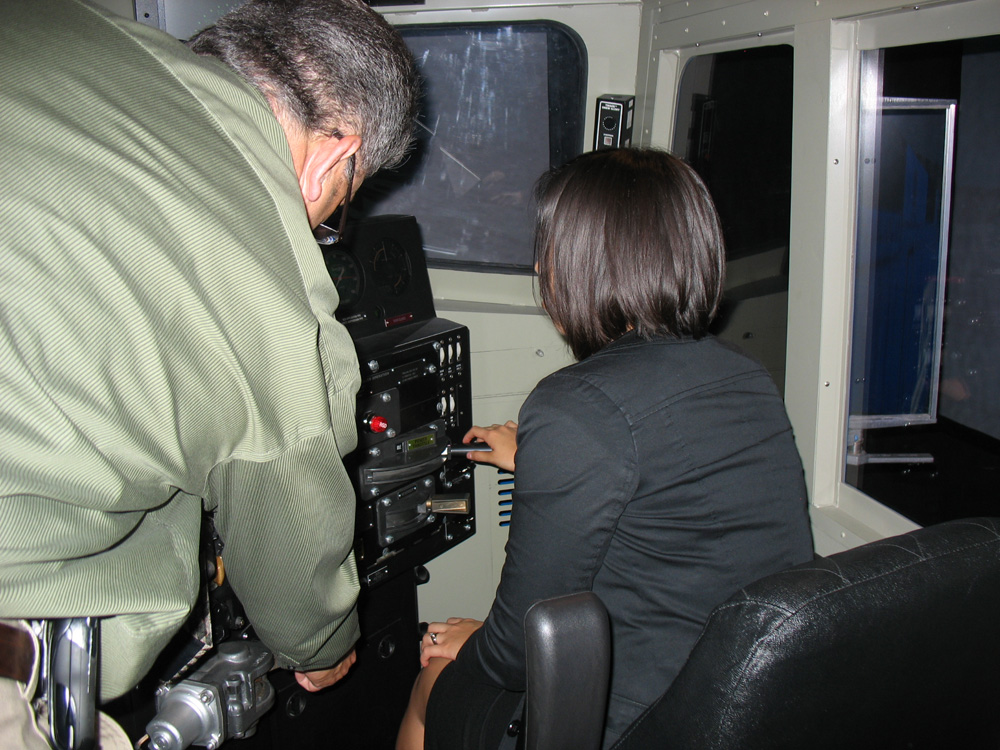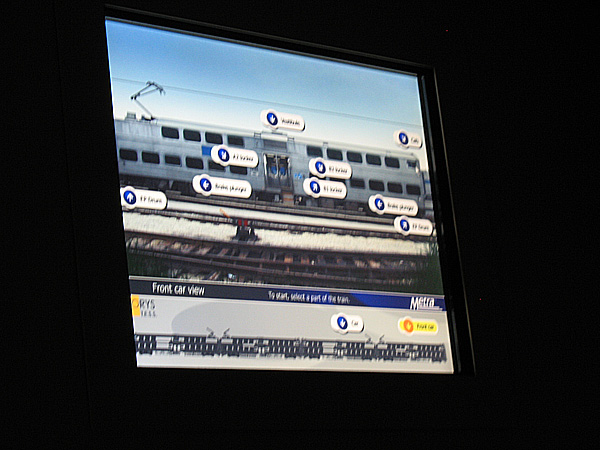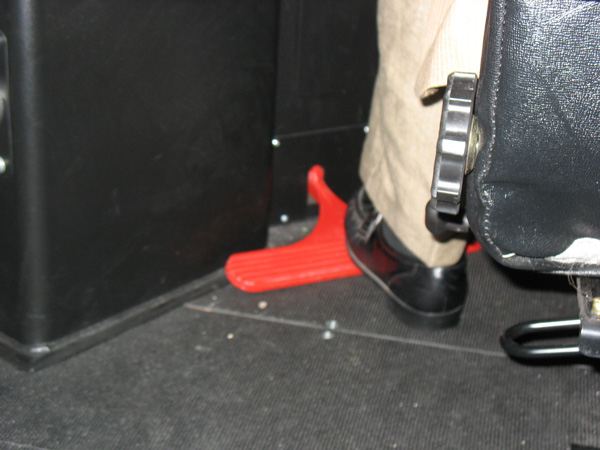Buzzer in Chicago: Train simulators!
Buzzer in Chicago: Train simulators!
We got to try out Metra’s train simulators on a technical tour yesterday! (I’m in Chicago for the APTA rail conference this week, if you didn’t know.)
Metra is Chicago’s commuter rail service, similar to WestCoast Express. They have five simulators that replicate each of their different train types, to teach new engineers how to drive.
And man, these things are awesomely real. Check out the video and watch how the views in the front and side windows all move seamlessly together. There’s even a rearview mirror, replicating exactly what you’d see behind you! (Tom, an instructor from Metra is the one talking.)
If you’re curious, SkyTrain has simulators for both MK I and MK II cars – I haven’t been down to try them yet, so I don’t know how similar they are to the Metra ones.
Here’s another video of us cooking along at a much faster speed. Bill Knight, our community relations coordinator is in the engineer’s seat (you might remember him from the TransLink in TV & film posts).

In the video, Bill’s driving the oldest type of vehicle that Metra runs, which dates back to the 1970s. The cab we’re in is an identical copy of the existing train cab. And the route is a computer-generated replica of Metra’s routes.
The routes are essentially identical, too: film footage was shot of every single Metra route, which was then converted to computer graphics (495 miles serving 230 stops!).
The simulators were completed in 2007, and now help train many more engineers. Before, only a single training car could give hands-on experience to one person at a time.
Okay, in this video we’re driving in Metra’s newest train car! And check it out — we’re driving through snow!

The simulator can replicate all kinds of weather, plus all kinds of technical breakdowns and other situations you might encounter on the rails. (Instructors can watch all your movements and gauges from consoles outside the simulator.)
There’s also a touch screen on the wall of each cab that lets you examine the different areas of the train — so if your train breaks down, you can look to find the damaged part or incorrect setting, fix it if possible, and get back on track.
(Here’s a good video that demonstrates how the scenery moves seamlessly in the front and sides. Watch the people on the platform in the front window– they show up in the side view afterward!)
I found that these simulators showed just how hard it is to drive a train. One of the other instructors even said he found it easier to get a pilot’s license than qualify for train operation.
For the most part, you have to work an air brake and a throttle together to manage your speed during the journey, and it’s a weird delicate dance to get them to operate together smoothly and land at a station properly!
There’s also all kinds of gauges to pay attention to, signals and speed signs on the track to watch for, and other concerns.

In addition, there are numerous failsafes to make sure engineers stay alert, and to make sure the train is safe if something happens to the driver.
Here’s the dead man’s switch, which is a pedal you have to keep your foot on while driving the train. If you collapse or something and your foot goes off, the train will come to a stop.
As well, a bunch of annoying flashing lights and noises go off periodically if you haven’t touched any of the controls in a while. You just have to hit a button to stop them, but it’s another way to help you stay awake and responsive.
And let’s cap this off with this last video:
Look how quick that weather changes! Kind of reminds me of Vancouver :)






So you plan to engineer the WCE AND print the buzzer/manage the Blog.
Wow! I could never do that! Lol
This is totally off-topic, but I wanted to comment on the new signage at Waterfront station. It looks great, but the use of colour is misleading.
At the far wall when you reach the top of the escalator from SkyTrain, there is a grey sign pointing left for Seabus and a light blue one pointing right that currently has no text. Excuse me for saying so, but that’s crazy.
Blue says “water” and is the color used on transit maps for SeaBus.
Grey says “concrete” and “city”. If the intention of the sign is to lead people to Canada Line then it’s wrong there too because TransLink uses red for Canada Line on transit maps.
While on that topic, I just noticed that the main TransLink site doesn’t offer any downloadable system maps right now, just a basic zone map and detailed maps of SkyTrain stations and bus exchanges. I’m guessing that’s because they’re undergoing change to incorporate Canada Line integration, but I think the old one should be available until it’s obsolete.
I guess we don’t have any simulators since all are trains are automated.
We do have simulators actually! Attendants need to be trained to drive the trains just in case. When I get back I’ll go down to SkyTrain and see if I can’t give the simulators a try — they have one for MK I and one for MK II.
[…] get to know people in the industry. See my conference posts from last year — I got to try a train simulator and […]
[…] if it doesn’t look familiar). As you’ll recall, the simulator I tried in Chicago used a 3-D graphics simulation of the system. Melanie and Craig from Canada […]
[…] Foot pedal on 1970s train via Tran Link’s The Buzzer Blog | Raccoon via c4c. Rate this:SHARE […]